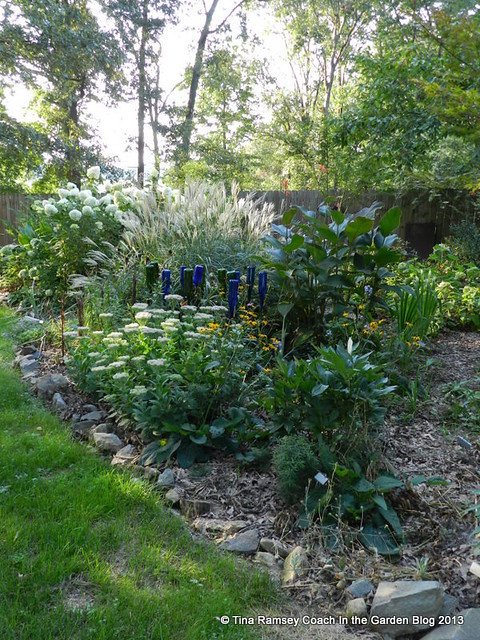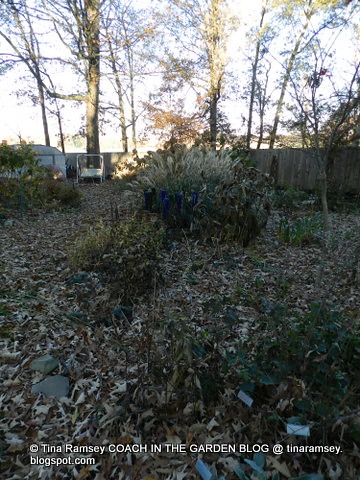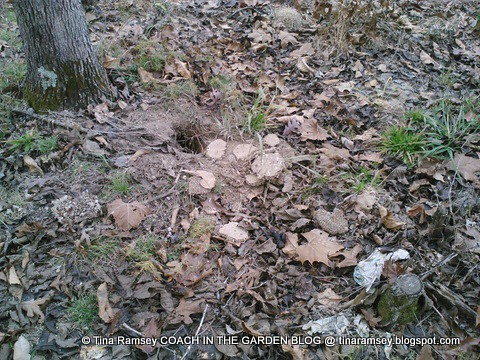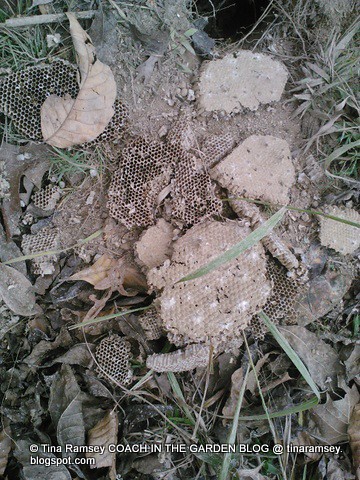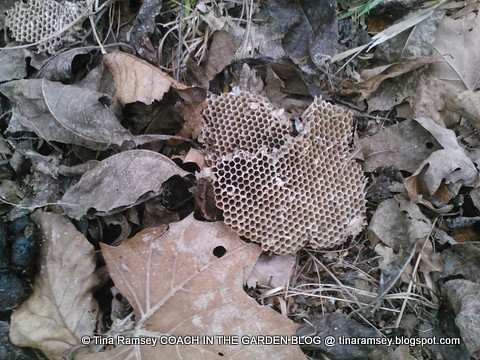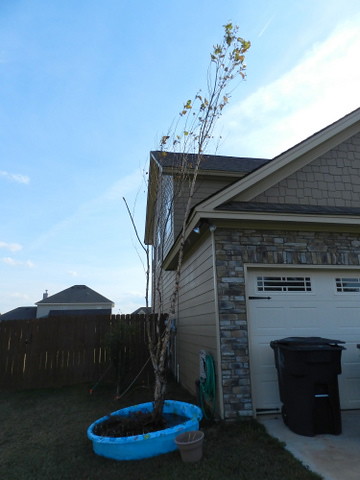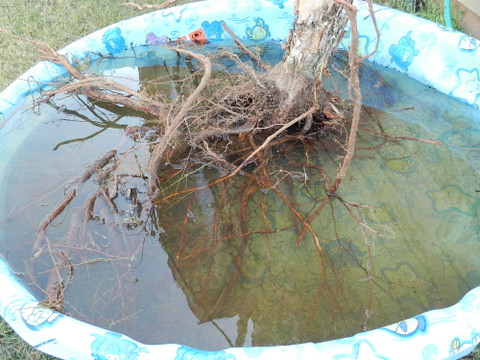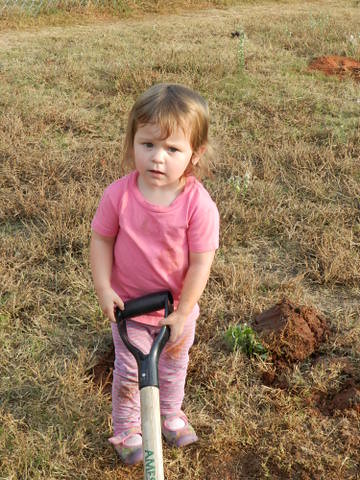One of the signs of good garden design (in my opinion-just like everything else on this blog) is the fact that the garden can look good all year long. This is not an easy thing to do. The gardener must be intimately familiar with plants, textures, structure, form, color, line, repetition, and focal points AND must be able to put it all together. This is not an easy feat. Most all gardens will look good at some point during the year. I have many gardens like this in my landscape but during other seasons or months they might not look so good. Enter the Greenhouse Garden.
I was so enamored with my Greenhouse Garden this year I decided to document its progress throughout the growing season and beyond. I thought it looked great all the time! I'll try to outline the changes you see in the garden as the months progress but the one thing that is consistent in this garden is that it works, and it looks good all year. A little background info first. I designed this garden to be viewed from above. Since the area slopes down I placed taller plants at the back and to the rear of the front of the garden tiered upwards. This process works to balance out the sloping ground. I wanted the ground to be full all year long and I wanted interest. Interest does not necessarily equate blooms and flowers but there are some of them in this garden as well.
The Greenhouse Garden is three years old and is a delight to me. Each year it has gotten better with growth. I do sometimes have to adjust but this year I honestly did nothing to it at all. No watering, no weeding, only light pruning of the 'Limelight' hydrangeas and that is it. No maintenance and lots of beauty is the kind of gardens I desire in my landscape-what about you?
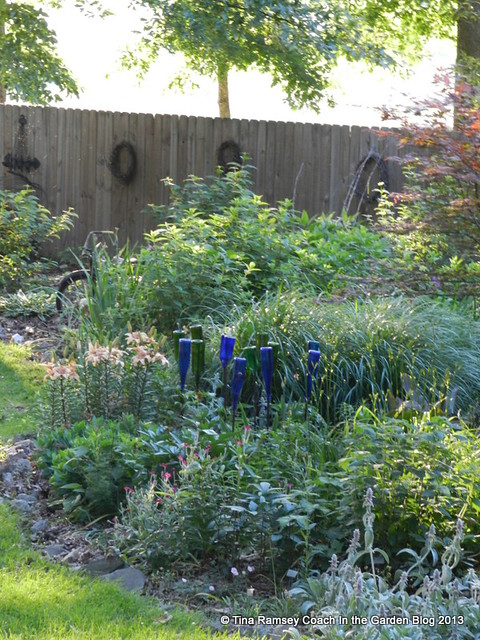
June 3, 2013
We start in early June where the garden looks like a bunch of mounds you can easily make a bed in and get some sleep. The grass reminds me of a bed! That ornamental grass is 'Adagio'. It is my go to grass of choice in landscapes. We do have some color in the form of 'Tango 4U' Asiatic lilies. The bottles are a constant presence and were placed there to highlight the pink coneflowers that will bloom a bit later in the season.
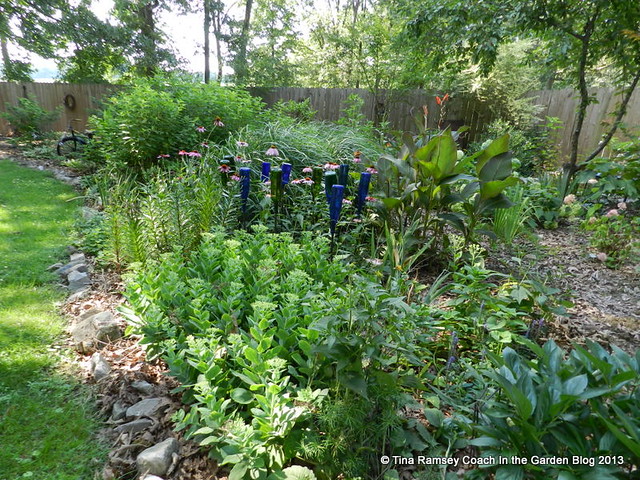
July 9, 2013
The coneflowers are now blooming and the Asiatic lilies have faded away. Cannas are beginning their long season of bloom and the 'Limelight' hydrangeas in the back are growing larger. It is at this point I trimmed them a bit. Joe Pye weed is hiding behind and the right of the hydrangeas way in the back. It does not make its presence known until a bit later in the season.

July 21, 2013
Coneflowers are still blooming and now the sedum is forming its buds. Sedum is a must have plant in all perennial gardens. It looks good all year round and as a bonus is drought tolerant and attracts bees and butterflies. Everything is getting fuller and more lush as the season progresses.
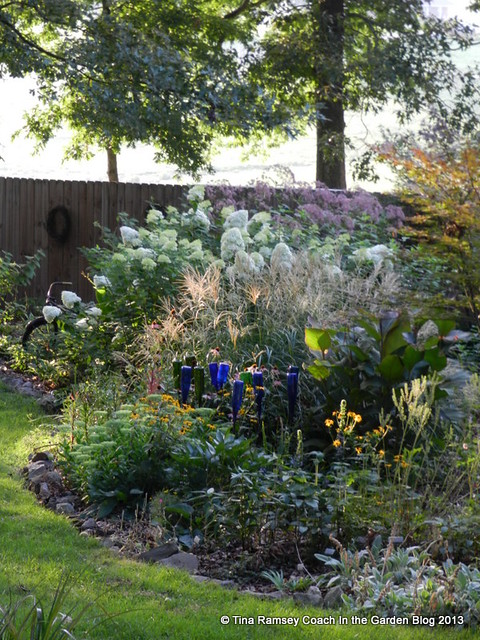
I was so enamored with my Greenhouse Garden this year I decided to document its progress throughout the growing season and beyond. I thought it looked great all the time! I'll try to outline the changes you see in the garden as the months progress but the one thing that is consistent in this garden is that it works, and it looks good all year. A little background info first. I designed this garden to be viewed from above. Since the area slopes down I placed taller plants at the back and to the rear of the front of the garden tiered upwards. This process works to balance out the sloping ground. I wanted the ground to be full all year long and I wanted interest. Interest does not necessarily equate blooms and flowers but there are some of them in this garden as well.
The Greenhouse Garden is three years old and is a delight to me. Each year it has gotten better with growth. I do sometimes have to adjust but this year I honestly did nothing to it at all. No watering, no weeding, only light pruning of the 'Limelight' hydrangeas and that is it. No maintenance and lots of beauty is the kind of gardens I desire in my landscape-what about you?

June 3, 2013
We start in early June where the garden looks like a bunch of mounds you can easily make a bed in and get some sleep. The grass reminds me of a bed! That ornamental grass is 'Adagio'. It is my go to grass of choice in landscapes. We do have some color in the form of 'Tango 4U' Asiatic lilies. The bottles are a constant presence and were placed there to highlight the pink coneflowers that will bloom a bit later in the season.

July 9, 2013
The coneflowers are now blooming and the Asiatic lilies have faded away. Cannas are beginning their long season of bloom and the 'Limelight' hydrangeas in the back are growing larger. It is at this point I trimmed them a bit. Joe Pye weed is hiding behind and the right of the hydrangeas way in the back. It does not make its presence known until a bit later in the season.

July 21, 2013
Coneflowers are still blooming and now the sedum is forming its buds. Sedum is a must have plant in all perennial gardens. It looks good all year round and as a bonus is drought tolerant and attracts bees and butterflies. Everything is getting fuller and more lush as the season progresses.

August 8, 2013
Then comes the WOW effect! The 'Limelights' are now beginning their bloom, the Joe Pye weed in the background has made its presence known, 'Goldsturm' rudbeckia is perking up, and 'Adagio' has begun its bloom. The bold leaves of cannas help to offset the finer foliage of the grasses and peonies here.
Then comes the WOW effect! The 'Limelights' are now beginning their bloom, the Joe Pye weed in the background has made its presence known, 'Goldsturm' rudbeckia is perking up, and 'Adagio' has begun its bloom. The bold leaves of cannas help to offset the finer foliage of the grasses and peonies here.
August 26, 2013
The sedum is getting closer to blooming and the 'Adagio' grass has grown even taller. Everything is quite happy here now but the beautiful Joe Pye weed has gone by. That is one complaint I have about Joe Pye weed-it does not have a long season of bloom.
The sedum is getting closer to blooming and the 'Adagio' grass has grown even taller. Everything is quite happy here now but the beautiful Joe Pye weed has gone by. That is one complaint I have about Joe Pye weed-it does not have a long season of bloom.
September 8, 2013
Now in September our sedum is in full bloom and the 'Limelight' hydrangeas and 'Adagio' are still going strong. The rudbeckias are on their way out. The cannas are still a presence and honestly I plant cannas more for foliage than for blooms but some cannas do have great blooms.
Now in September our sedum is in full bloom and the 'Limelight' hydrangeas and 'Adagio' are still going strong. The rudbeckias are on their way out. The cannas are still a presence and honestly I plant cannas more for foliage than for blooms but some cannas do have great blooms.
This is a long shot of the landscape area where the Greenhouse garden is located. The path through the middle used to house a 24' above ground swimming pool a few years ago. Regular readers might remember my challenges with taking that pool out. We just had too many trees to make having a pool all that worthwhile for us. The garden area on the left is under a large cedar tree and gets more shade than the Greenhouse Garden. I did carry some plants over to that area mainly in the form of my wonderful 'Limelight' hydrangeas.
November 13, 2013
I had to wait a long time to get this final picture because I was out of town. Unfortunately I did not get any good shots of the garden in October. This picture was taken upon my arrival home. The perennials such as the peonies are mostly gone, The cannas are still there but are all brown, the sedum is still in the garden but is fading to yellow. The grasses and the 'Limelight' hydrangeas are still there tho. They will carry this garden through until February when the hellebores, pulmonaria, and bulbs begin their bloom. I leave most of plants standing until then especially if those same plants have good winter interest. Plants that provide good winter interest and which I leave up are: coneflowers, mums, asters, sedum, rudbeckia, and grasses. I cut all peonies, cannas, crinums, etc.
I'm going to leave you all with this post and wish you all Happy Holidays!
in the garden....
Words and Photos Property of In the Garden Blog Team, In the Garden
